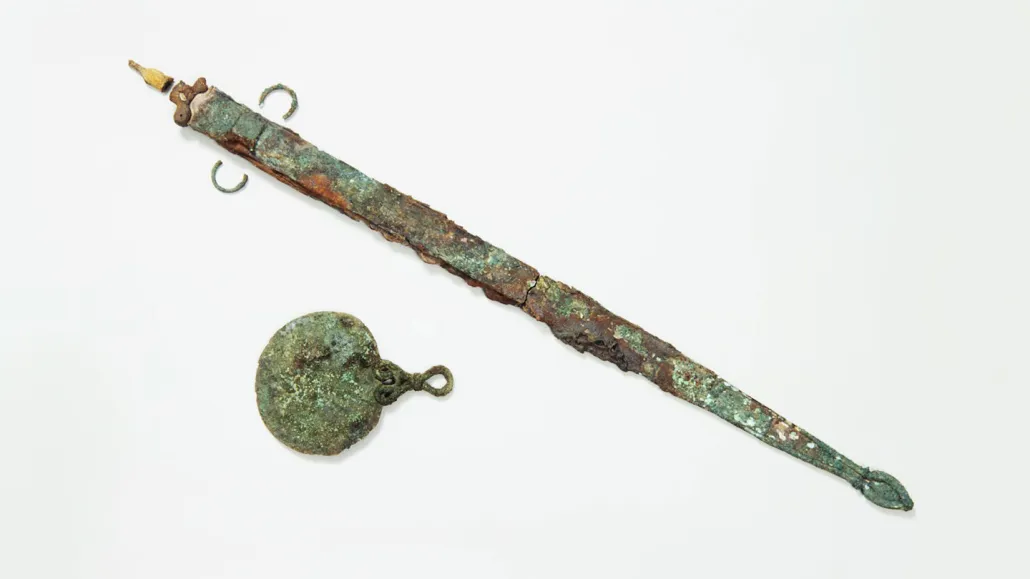A mysterious ancient grave with a sword and mirror belonged to a woman
The find may add to growing evidence that suggests women long ago could be warriors

Evidence indicates that bone fragments in a roughly 2,000-year-old grave in England, which also contained a sword and bronze mirror (shown), belonged to a woman who might have fought in or planned violent raids.
© Historic England Archive